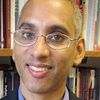Hinduism
Hinduism is a conglomeration of a variety of beliefs and practices with no one, or official, set of doctrines or religious authorities. I thus offer an account of brain death from a systematic, and somewhat unified, perspective shared by several schools of Hindu philosophy concerning the mechanisms and components of consciousness and cognition. According to this view the cessation of "higher brain function" is the sole criterion for establishing brain death. If there is an irreversible cessation of the capacity for consciousness, then organ transplantation is permissible. This coheres with a "consciousness approach," rather than a "whole brain," or a cardio-pulmonary approach. This view, then, is open to the same criticisms as other "consciousness approach" positions. Cessation of "higher brain function," then, is sufficient for declaration of "brain death."
Basic Religious Worldview of Hinduism
Hindus believe in the mechanism of karma, that one's actions in earlier lives effected one's rebirth as well as the events that are to occur in one's future lives. The ātman (enduring self) accumulates karma and is born again and again in saṃsāra (worldly existence). Hindus seek to end this seemingly endless cycle of birth and rebirth. The state that the ātman enters after being liberated from the cycle is called mokṣa.
Personality, Cognition, and the ātman
The ātman is characterized predominantly as passive, immaterial, and without discriminative discernment. The "person" and the "personality," namely self-awareness, cognitive experiences, and so on, is actually, and merely, a conglomeration of material components, which is distinctively different from the ātman. These components are the buddhi (intellect), ahaṃkāra (ego), the manas (mind), and the ten indriyas (capacities that enable sensing, motor functioning and thinking). (The archetype of this basic structure is found in the Sāṃkhya school) The ten indriyas are separable into the five buddhi-indriyas (sense capacities) and five karma-indriyas (action capacities). The buddhi-indriyas are ghrāṇa (smell), rasana (taste), cakṣus (sight), śrotra (hearing), and tvac (touch). The karma-indriyas are vāc (speaking), pāṇī (grasping), pāda (going), pāyu (excreting), and upastha (procreation). The buddhi-indriyas feed unmediated and unanalyzed data to the manas, which acts as a processing and organizational unit, not unlike the CPU of a computer. These then are passed on to the buddhi via the ahamkāra and are further analyzed and cognized. The ātman is metaphorically characterized as "observing" the buddhi and other cognitive components and incorrectly "identifying" with them. The epistemic-ontological confusion causes the immaterial ātman to equate itself falsely with the activities and material world of the buddhi. These cognitive components produce, and make possible, "higher brain function."
The goal is for the ātman to use the material to re-"cognize" its immaterial nature, and, to re-"cognize" its nature as both passive and outside/ independent of material things, especially the cognitive components. The end result is deemed mokṣa (liberation) from the error of identifying with the body, and, indirectly, "higher brain function." The ātman is thus believed to have exited the cycle of birth and rebirth. Of course, the ātman is without discriminative discernment so the discrimination "the ātman is not the buddhi" is properly understood as metaphor. The right cognitive habit, in this paradoxical view, is the realization that one is not identical with any cognitive habits.
A Hindu who is well advanced on the path to achieving this realization may eventually achieve the extinction of all "higher brain" function and could, therefore, be deemed "brain dead," according to accepted allopathic evaluative metrics. A brain death of this variety, of course, is intentional. Once this state has been attained, it is permissible to harvest any and all organs from the body.
In cases where a person who is not seeking the realization that "the ātman is not identical with any cognitive habits" intentionally and forcibly or violently separates the ātman from the body, that is, commits suicide, the result is not understood to be, or identical with, mokṣa, though the allopathic evaluative metric would seem identical. Despite the unfortunate circumstances, it is nevertheless permissible to harvest any and all organs from the body.
Unintentional, or accidental, brain death.
In cases where a person is not seeking this realization, willingly or intentionally, (if the person is the victim of a traumatic brain injury, or has an injury that results in cerebral hypoxia, for example) and has been declared to have no "higher brain" function according to accepted allopathic evaluative metrics , it would be incorrect to equate this state with mokṣa. Rather, in such cases, the immaterial ātman would be believed to have left the body to be reborn in another body. It is permissible to harvest any and all organs from a body that has an intact and functioning brain stem with cardiac and respiratory activity but that has no "higher brain function," like the body of the Hindu who attained intentional brain death, or has committed suicide. It is permissible to harvest organs for transplantation as soon as it is determined that there is a cessation in "higher brain function."
In both cases the body is merely a repository for the ātman. In the former case the ātman is believed to have abandoned an identity with the body and the latter the ātman has been accidentally removed from the body. In the latter case, the brain death, of course, is unwelcome. Despite this regrettable outcome, in both cases it is permissible to harvest any and all organs. Unintentional or accidental brain death, and not mokṣa-driven, is likely to comprise the majority of brain death cases.
Summary
While "brain death" has a number of conflicting connotations in contemporary bioethical conversations, the majority of schools of Hindu philosophy agree that it refers to the loss of "higher brain" function. In Hindu philosophical language this is a result of the destruction of the material components required for cognition and of consciousness. Whether the immaterial ātman has intentionally or unintentionally separated itself from these material cognitive components and brain death has been identified, it is permissible to harvest any and all organs from the brain dead Hindu body.
